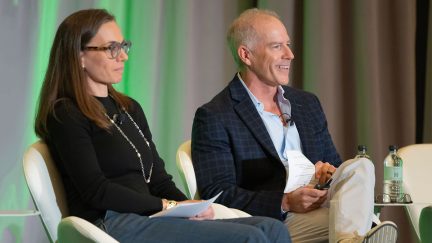Want the latest retirement plan adviser news and insights? Sign up for PLANADVISER newsletters.
Edward Jones Aims For Half Its Advisers to Be Women
Edward Jones recently announced the relaunch of a firm-wide network designed to help financial advisers who are women thrive in the business, whether they are new to the profession or industry veterans.
The network is called “WINGS,” short for the Women’s Initiative for New Growth Strategies. In joining the revamped network, advisers will gain various practice management tools, mentorship resources and “coaching designed to strengthen and advance female career trajectories at the firm.” Hundreds of people will staff the diversity effort, the firm tells PLANADVISER.
“At Edward Jones, more than one-quarter of our recruits are women, but the number should be higher,” observes Monica Giuseffi, principal of financial adviser inclusion and diversity at Edward Jones, while describing the new initiative she oversees. “As the dynamics of our workforce and the clients we serve continue to evolve, we must embrace diversity of thought, background and experience across our firm.”
Giuseffi and others have long been arguing this point, in reference to both the lack of representation of women and racial/cultural minority groups in the U.S. financial advisory field. She notes the relaunch of WINGS comes on the heels of a recent hiring pledge made by Edward Jones Managing Partner Jim Weddle, in June 2017. He was one of some 150 American CEOs to sign a “CEO Action for Diversity & Inclusion Commitment” to move forward and create a more diverse and inclusive work environment.
“Comradery, trust, people and confidence-building have always been the most important parts of Edward Jones’ culture,” Giuseffi says, noting she has some 16 years of personal experience with the firm. “With this relaunched program we are doubling down on the resources committed to make sure all our advisers and potential hires benefit from this culture.”
She agrees that the 15 years she spent in the field has given her an invaluable insight into the challenges faced by women advisers in the day-to-day. “Right now we see that just 19% of advisers in the U.S. are women,” she observes. “When you look at fields that intersect with the advisory space and see that 52% of accountants are women and 32% of attorneys are women, it really shows inclusion in the advisory industry is not satisfactory. At Edward Jones we aren’t shy about our goal for WINGS and the BRIDGE program, which offers very similar resources with the aim of supporting cultural diversity.”
Giuseffi concludes by stressing that the firm truly believes that improving diversity in its workforce will help draw new clients and improve the performance and resiliency of the firm for the long-term future: “Edward Jones’ goal for diversity is clear: We want 50% of our advisory staff to be women. We feel good not only about sharing that goal but also about our chances of getting to that point within the tangible future, and what it means for our business outlook. On the cultural inclusion problem, we want to see 33% diversity across the population of men and women who work as our advisers.”
You Might Also Like:

Rethinking Opportunities for RIA Growth

Advisers Step Up as Clients Face Market Uncertainty
